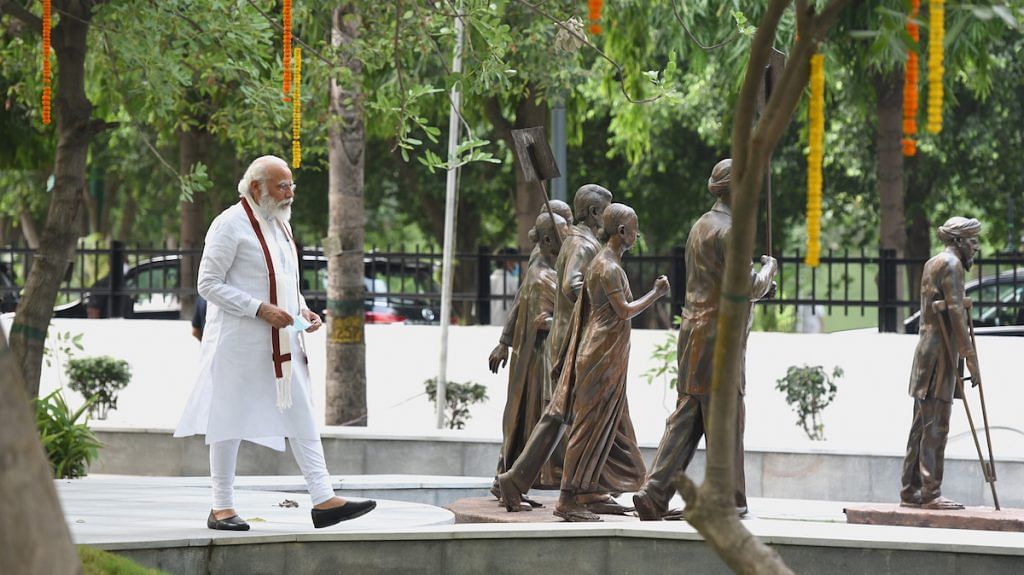The Narendra Modi-Amit Shah government projects invincibility. Its public image is that it doesn’t trip or get spooked easily – not by CAA-NRC, JNU, Rohith Vemula, or Kashmir protests.
In the wider public opinion, Modi-Shah apparently don’t have an Achilles heel.
But if you listen to the protesting farmers from Punjab and Haryana, they speak as if they have already achieved a never-before success. After all, they have managed to drag the Modi government to the negotiating table, they say. The government has never bothered to reach out to leaders of any of the previous protests. This is a government that is impervious to public pressure.
But now, just the optics of six rounds of talks with farm leaders – first Rajnath Singh, then Amit Shah – the Modi government is showing it is vulnerable to the constituency of farmers, at least in the perception politics. This, in spite of the fact that Modi has displayed absolute conviction in the rationale of the farm laws when he said that old laws of the past century have become a “burden”. And yet, his government is engaging in talks, which it hasn’t with other protesters. By contrast, he didn’t flinch even once after the draconian demonetisation.
The only other instance of an otherwise unyielding government relenting was on the land acquisition ordinance in 2015. This was after Congress leader Rahul Gandhi drummed up a campaign around farmers’ security. He tagged the Modi government as the ‘suit-boot ki sarkar’ and it hurt. In his radio programme Mann ki Baat, while withdrawing the ordinance, Modi told the “farmer brothers and sisters” that he is “open to all views and suggestions”.
Also read: Modi faces no political costs for suffering he causes. He’s just like Iran’s Ali Khamenei
Unaffected, unrattled
In the past six years, PM Modi has gone through a series of controversial decisions not caring for the tremendous opposition – demonetisation, abrogation of Article 370, CAA-NRC, Goods and Services Tax (GST) and so on. Confident in his political hold and charisma, Modi rarely blinks.
If we were to do a roll call of protesting communities against the government, there are Muslims, Kashmiris, and students. But none of these groups rattle Modi. The Bharatiya Janata Party (BJP) has managed to win elections without Muslim support, has a sizeable fan following among the youth and has enlisted Dalits in its political project quite successfully.
Modi’s Teflon seems to come off just with two communities – farmers and Dalits.
Modi’s Achilles heel
The other time that the Modi government listened to popular protests was on the issue of dilution of SC/ST atrocities prevention law. In March 2018, the Supreme Court ruled on a provision for anticipatory bail to offenders under this law, and Dalit protests ensued, including a call for Bharat Bandh. The Modi government quickly annulled this provision through a review petition and restored the original atrocities law.
After the massive Bhima Koregaon agitation, a senior official told me that the government was so rattled that intelligence officers were asked to find out how such a large mobilisation had occurred. Who the protagonists were, how was the message circulated, what channels were used. The activists who had campaigned in Bhima Koregaon were rounded up, and still languish in jail without access to even basic rights.
The natural political question is: Are farmers and Dalits Modi’s Achilles heel?
Also read: The Modi playbook: Delay in PM condemning attacks on Kashmiris is part of a pattern
Politics of emotion
The BJP, under Modi and Shah, has been predatory, unwavering, uncompromising and winner-takes-all in its pursuit of power. But democracy isn’t just about winning elections. It is also about listening to and looking after interest groups.
‘Interest groups’ is a pejorative phrase in American politics, but it needn’t be. They perform an important role in democracy and policy making. A politician listens to some, disregards others. In this choice lies her political DNA and her idea of who she is and what she imagines her legacy to be. Politicians may use the word ‘nation’ in their rhetorical flourish, but in their day-to-day practice of democracy, they look at the country in segments – ethnic, regional, caste or religious identities. Any politician who tells you she doesn’t is lying.
But what is really curious in this is that farmers don’t vote as a single bloc. And Dalits are no longer voting as a bloc either for the Bahujan Samaj Party (Valmikis and Paswans have branched out). And Dalits have voted for Modi repeatedly and aided his victory in recent years. Clearly, then, it is not electoral stakes at play here.
So if Dalits and farmers are the two groups who make Modi blink, what does it say about his politics?
It has to do with what is called the cultural politics of emotion, a domain that Modi rules. He is not the only one. There are many politicians riding a global wave of emotional politics, where democracies are being transformed “by the power of feelings in ways that cannot be ignored or reversed”, wrote author William Davies in Nervous States.
How you navigate emotions and the interest group democracy is key to the image-making of a political party, and its leader. In Modi’s self-fashioning, the figures of kisan and Dalit are essential. He washes their feet, inaugurates Ambedkar memorials and projects himself as close to the soil – the real stuff of politics of emotion.
Hurting either of these two groups – one suffers from historical injustice and the other is hailed as the ‘annadata’ – has emotional costs, which speaks directly to his politics.
Views are personal.
